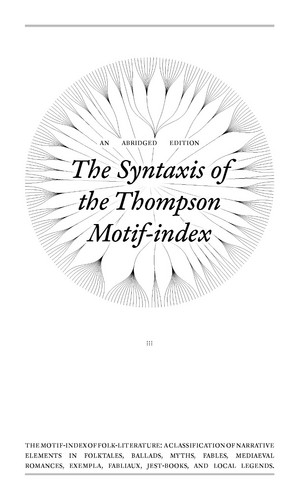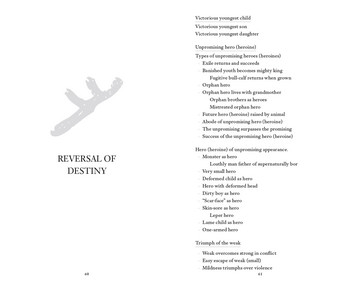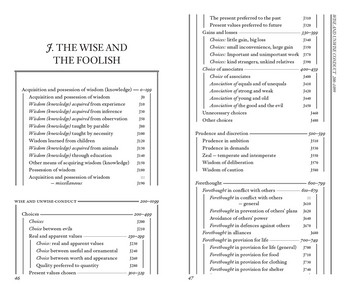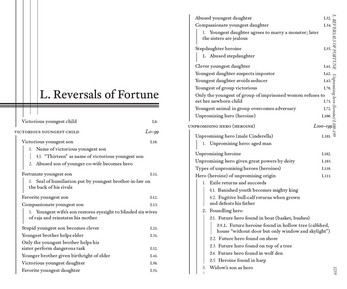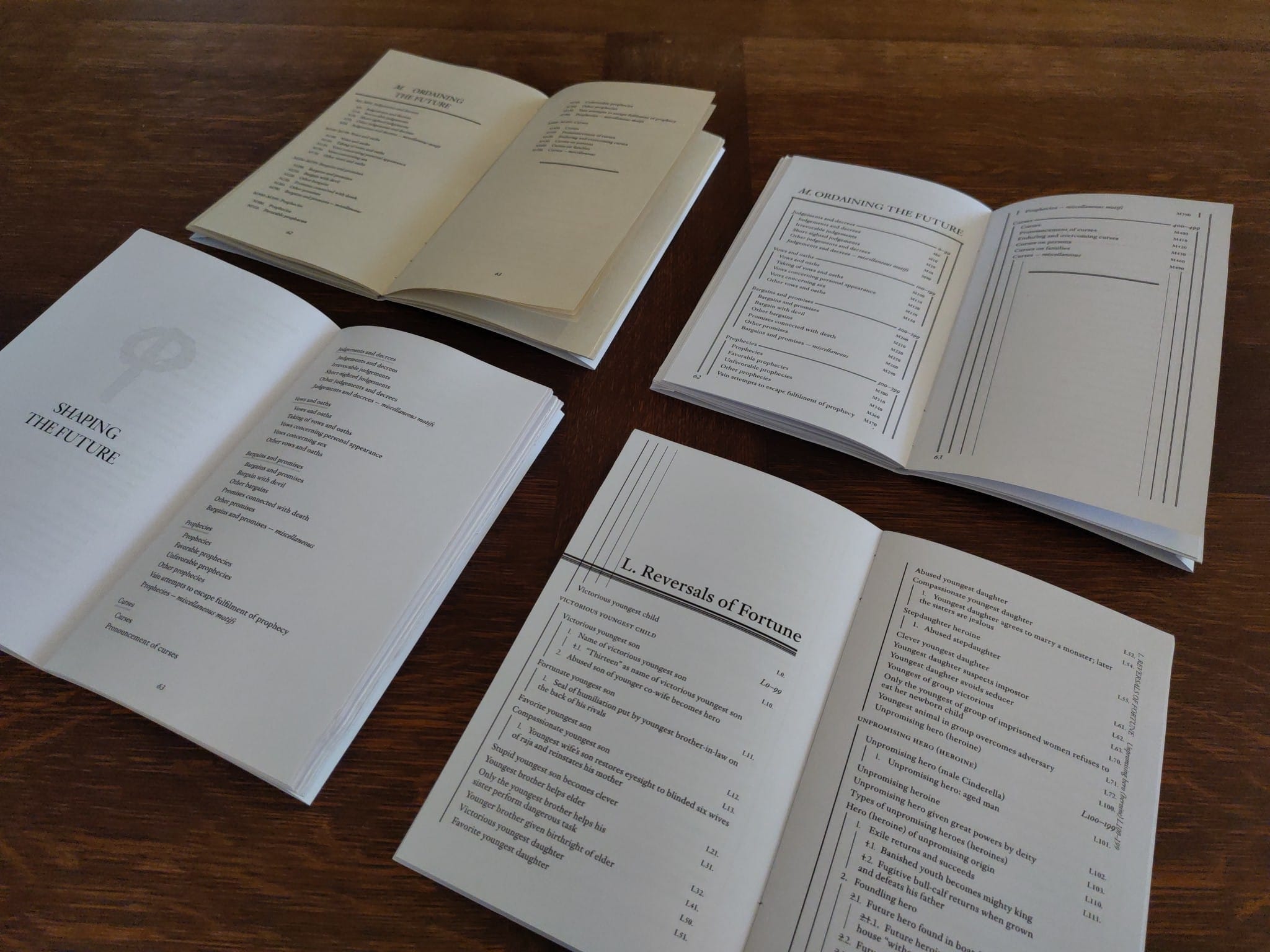
A list of clichés and tropes in stories
A downloadable book
note: PDFs coming very soon
A list of clichés and tropes in stories, this is a reedition of a tool for folklorists, but also great for writers, worldbuilders, dungeon masters and dreamers.
source: Stith Thompson Motif-Index of Folk-Literature (1958)
How to use:
Search something specific
or
Open randomly and discover
anyways
Have fun in this paper simulacrum of imagination
The Ol’ tropes Index | The title refers to the TVtropes Index, a website for writers and media hobbyists. This version skips the numbering and fuss. The titles have been adapted to reflect a modern scriptwriting terminology. Alphabetical categories have been obfuscated using their progenitor Phoenician letters.
The TMI light | For the ones that are familiar with the original book, and don't want to change their habits, this version follows the initial layout. It removes the cumbersome and the subcategories. The punctuation has been revised to be more pragmatic.
The Depths of the Motif-index | ‘First Subcategories’ and ‘All levels of Subcategories” (not printed). Instead of the broad structure, these versions show the subcategories and details. The top levels have been flattened to not steal the attention. The decimal codes are often very similar, limiting confusion was a focus of this layout.
The Syntaxis of the Thompson Motif-index | This version showcases the skeleton of the index, the categories’ internal nested structure. These relations are shown through rigid boxes and symmetrical indents, but also treelike data visualizations.
The Pocket Motif Dictionary | As the ‘All levels of Subcategories” is 1500 pages, this is an attempt to fit in less. This version takes inspiration from the ‘Schuylkill Notes”, a small paper slip that encompasses many conspiracies and supernatural theories.
Balancing the focus on readability, flow, numbering and structure, different layouts have been explored. Should the new edition present this index in a rigid manner, as useful tool, rationalization of a universal imagination? Or should it be treated as an intellectual artifact, an idiosyncratic view on cultural narratives?
| Status | In development |
| Category | Book |
| Author | iconolocode |
| Tags | Folklore, narratology, Solo RPG, storytelling |
